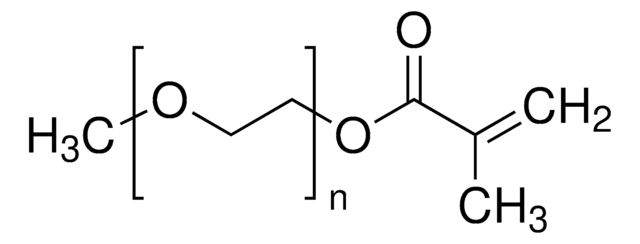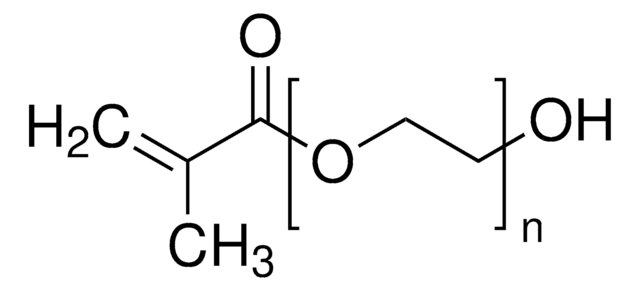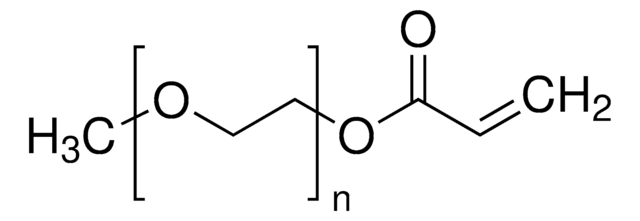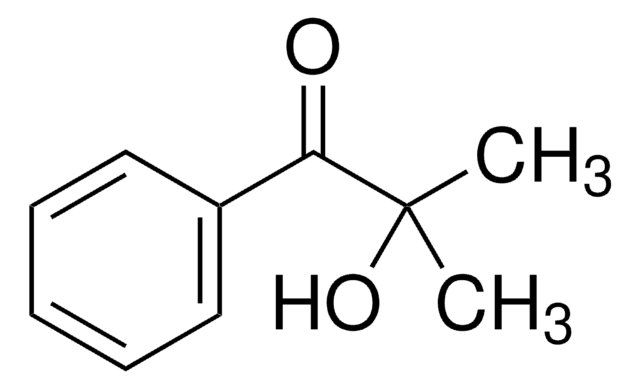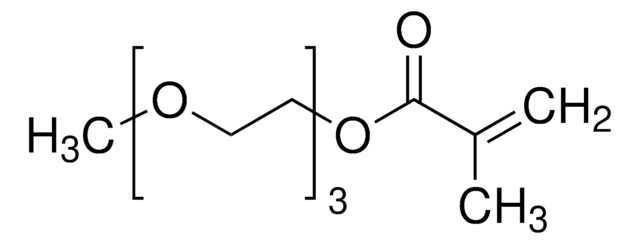409537
Poly(ethylene glycol) methacrylate
average Mn 360, methacrylate, 500-800 ppm MEHQ as inhibitor
Synonym(s):
Ethoxylated 2-hydroxyethyl methacrylate, PEGMA, Poly(ethylene oxide) monomethacrylate, Polyethylene glycol
About This Item
Recommended Products
Product Name
Poly(ethylene glycol) methacrylate, average Mn 360, contains 500-800 ppm MEHQ as inhibitor
form
liquid
Quality Level
mol wt
average Mn 360
contains
500-800 ppm MEHQ as inhibitor
reaction suitability
reagent type: cross-linking reagent
reaction type: Polymerization Reactions
refractive index
n20/D 1.464
density
1.105 g/mL at 25 °C
Ω-end
hydroxyl
α-end
methacrylate
polymer architecture
shape: linear
functionality: heterobifunctional
SMILES string
O(CCO)C(=O)C(=C)C
InChI
1S/C6H10O3/c1-5(2)6(8)9-4-3-7/h7H,1,3-4H2,2H3
InChI key
WOBHKFSMXKNTIM-UHFFFAOYSA-N
Looking for similar products? Visit Product Comparison Guide
Related Categories
General description
Application
- Degradable microspheres using asuspension polymerization process. The amphiphilic nature of PEGMA allows performingthe polymerization by direct oil in the water suspension process.
- Polymeric chelating beads for the effectiveremoval of heavy metals from aqueous solutions.
Physical form
Signal Word
Warning
Hazard Statements
Precautionary Statements
Hazard Classifications
Skin Irrit. 2
Storage Class Code
10 - Combustible liquids
WGK
WGK 3
Flash Point(F)
235.4 °F - closed cup
Flash Point(C)
113 °C - closed cup
Personal Protective Equipment
Regulatory Listings
Regulatory Listings are mainly provided for chemical products. Only limited information can be provided here for non-chemical products. No entry means none of the components are listed. It is the user’s obligation to ensure the safe and legal use of the product.
FSL
Group 4: Flammable liquids
Type 3 petroleums
Hazardous rank III
Water insoluble liquid
JAN Code
409537-100ML:
409537-BULK:
409537-5ML:
409537-500ML:
409537-VAR:
Choose from one of the most recent versions:
Already Own This Product?
Find documentation for the products that you have recently purchased in the Document Library.
Customers Also Viewed
Articles
Devising biomaterial scaffolds that are capable of recapitulating critical aspects of the complex extracellular nature of living tissues in a threedimensional (3D) fashion is a challenging requirement in the field of tissue engineering and regenerative medicine.
Global Trade Item Number
| SKU | GTIN |
|---|---|
| 409537-100ML | 4061831989366 |
| 409537-500ML | 4061831989373 |
| 409537-5ML |
Our team of scientists has experience in all areas of research including Life Science, Material Science, Chemical Synthesis, Chromatography, Analytical and many others.
Contact Technical Service